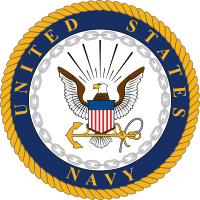Your initial exposure to oil or coolant test reports might be a little overwhelming. Here’s some suggestions as to how to review your test reports to help you get the most from your data.
- First, look at the Severity Code. It’s located in the upper right hand corner of your test report. The purpose of the Severity Code is to let you see the overall findings “at a glance”. The Overall Severity Rating is listed as “color-coded” ranges with numbers (0 thru 4). The chart below lists the various Severity Codes and how to interpret the results. Note: It’s not really important at this time that you understand the actual test values. Instead, it’s more important to know whether the sample is NORMAL, ABNORMAL or CRITICAL as all of the test values have been taken into account as part of the Overall Severity Rating.
| Overall Severity Rating | Severity Range | How to Interpret Your Results |
| NORMAL | 0 to 1 | Indicates your sample tested within normal range limits1 established for samples in similar equipment applications |
| ABNORMAL | 2 to 3 | Indicates your sample tested outside normal range limits established for samples in similar equipment applications. |
| CRITICAL | 4 | Indicates your sample tested outside abnormal range limits and that the sample shows a problem, or problems, that need immediate maintenance actions as covered in the Comments Section of the report. |
- Next, read the Comments Section. The Comments Section tells you what the testing revealed and what our laboratory data analysts have to say about the results. Here, you’ll also find maintenance recommendations. Recommendations may suggest immediate action or it may suggest continuing to run the oil or coolant for additional time. The Comments Section should help you the most as it tries to pinpoint problems and it contains the most information and as “straight talk” as possible about your sample.
- Last, look at the actual data and note the color coded boxes. The colors match up with the overall Severity Rating and point to problems and concerns found with your sample.
What does it mean if my report shows “Missing Information”?
The information, listed at the top of your test report (see example below) may show “Missing Information” in either the Filter or Product Information boxes. Customers sometimes worry that this may indicate that the report is somehow no good or of little value. However, nothing could be further from the truth. Even without the information about the filter oil the oil or coolant type, your test report is still meaningful and a valuable part of the RV inspection. Why do we say this? Because oil and coolant test reports, from JG Lubricant Services, are designed to give as much information about your RV’s engine, transmission, generator and/or cooling system as possible and tell you if there are any issues that may need further attention before you sign on the bottom line.

Unfortunately, RV sellers may often be unaware of the type of oils and/or coolants currently in the various RV systems. As an example, consider your own personal vehicles. Unless you happen to be a “gear head” or a really ambitious “Do It Yourself” (DIY) that does their own oil, coolant and filter changes, this information is typically unknown. Most folks use the DIFM (Do It For Me) method. They take their vehicle to the local Jiffy Lube or their favorite service center and let them do the dirty work. They put a sticker on the window that tells you the odometer reading or calendar time when your next change is due. Consequently, most folks have no idea what’s in the engine or generator crankcase, the transmission sump or the cooling systems. However, for inspection purposes, that’s still OK. It would be nice to have this information if possible; but, it’s not necessary. If oil and coolant type are known, the lab can also tell you if the oils or coolants can be safely run longer to save money. That’s why it’s always a good idea to keep doing fluid analysis on your RV after you make the purchase.
NRVIA Certified RV Inspectors have been trained to enter as much information as possible about the RV equipment. This enables the lab to do a better job of keeping an historical record of the oil and cooling system inspections. Information includes such things as Vehicle Identification Number (VIN), RV make, RV model, vehicle odometer reading, generator hour meter reading, and engine, transmission and generator makes and models. Even with all this effort, the simple fact is that, on most used RVs, details about oil and coolant manufacturers, brand names, viscosity grades, and coolant types is often unknown. This is true whether we inspect an RV that’s sitting on a dealer’s lot or if the RV is being sold by an individual in their driveway.
Fluid Analysis test reports are designed to point out any major issues and educate you as to anything that might be of concern prior to your purchase. The exact type oil or coolant is typically not required to make those kinds of observations. As stated on the first page, look at the Severity Code. If it’s in the normal range, the oil and/or coolant test came back OK. If it’s abnormal or critical, the comments will explain what was found and what to do about it. Don’t worry if your test report happens to show the words “Missing Information”. It’s typical of most used RV test reports and has no effect on the value of your test report. The reports give you valuable information about your RV drivetrain and generator systems that most other RV inspection services don’t even address. Most others will only pull the dipsticks and tell you whether or not oil or coolant is present in the systems and that’s it.
1 Range limits are established through statistical methods proprietary to our contracted testing laboratory.


